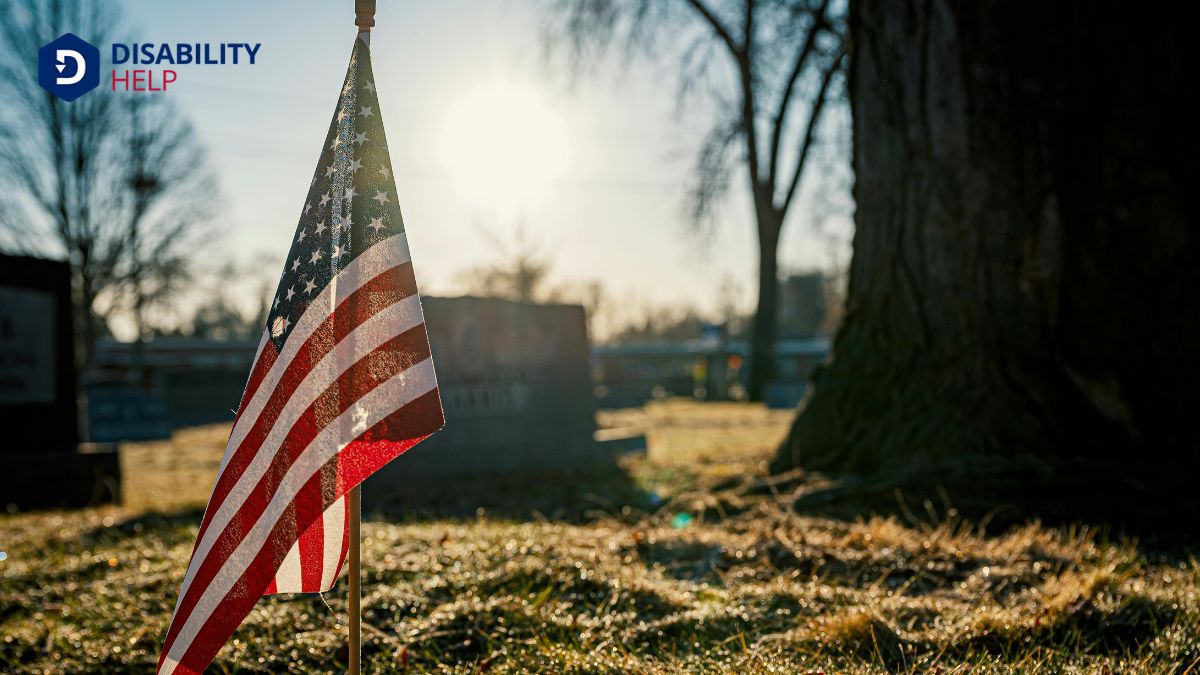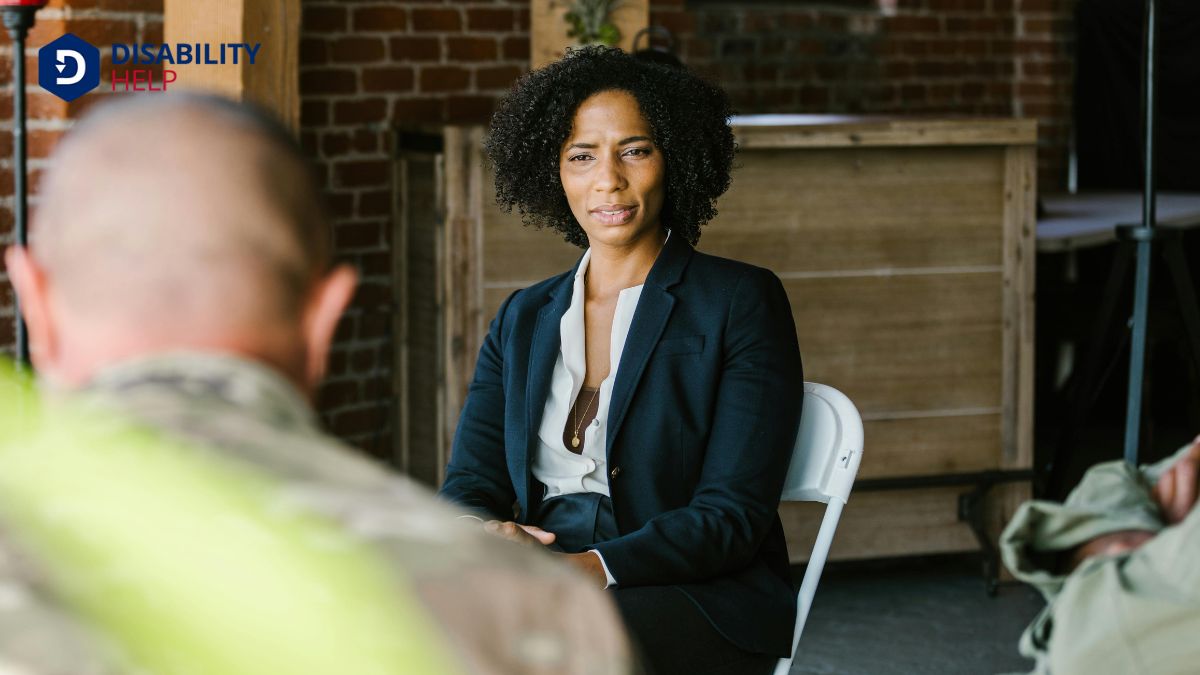We identify a veteran by recognizing unique military insignias, such as emblems and rank symbols that vary by branch. Look for tattoos that tell stories of unit affiliations, service locations, or comrades. Notice their use of military jargon and the distinct structure of their language. Veterans often have an upright posture and might carry visible service-related scars. Their disciplined routines and leadership traits can stand out. Many engage actively in community service and advocacyThe act of arguing in favor of, supporting, or defending the rights and interests of individuals or .... It's important to respect their privacy and boundaries and be sensitive to their experiences. Let's continue to explore these identifiers and deepen our understanding.
Key Takeaways
- Look for military insignia on clothing or accessories, indicating service branch and rank.
- Notice tattoos featuring military symbols, unit insignia, or significant service-related imagery.
- Listen for military-specific language or acronyms suggesting a background in service.
- Observe disciplined behavior, leadership traits, and heightened situational awareness.
- Recognize involvement in community initiatives or veteran advocacy as signs of military service.
Recognizing Military Insignia
When it comes to recognizing military insignia, it's important that we grasp the importance and details behind each emblem. These symbols represent a rich history and the service of individuals who've dedicated themselves to protecting our nation. By familiarizing ourselves with these insignia, we can better understand a veteran's branch of service and rank, which fosters a deeper appreciation of their experience and sacrifice.
First, let's look at the different branches of the military, each with a unique insignia. The Army, Navy, Air Force, Marine Corps, and Coast Guard all have distinct emblems. Recognizing them requires us to pay attention to specific elements like colors, symbols, and patterns. For example, the Marine Corps emblem features an eagle, globe, and anchor, symbolizing their commitment to both land and sea.
We should also note the insignia of rank, which can vary significantly within the same branch. Rank insignia often appear on uniform sleeves or shoulders and include stripes, bars, or stars. By learning these details, we can identify whether a veteran was an enlisted member, a non-commissioned officer, or a commissioned officer. Understanding these symbols honors their service and achievements.
Noticing Tattoos and Symbols

Tattoos can serve as a living canvas of a veteran's military journey, often bearing symbols and imagery unique to their service. When we notice these tattoos, we're given a glimpse into their personal stories. Each design, whether it's a unit insignia, a meaningful phrase, or a date, reflects significant moments and achievements in their time of service. By recognizing these symbols, we can better understand the experiences that have shaped their lives.
Common symbols include anchors, eagles, flags, and even specific emblems of various military branches. These tattoos aren't just art; they're badges of honor that communicate pride, camaraderie, and sacrifice. Some veterans choose to mark their bodies with images of places they've served, battles they've fought, or comrades they've lost. These tattoos hold deep emotional significance and can offer insight into the veteran's personal and collective history.
When we encounter a veteran's tattoo, we should approach it with respect and curiosity. By acknowledging these symbols, we not only honor their service but also open ourselves to learning about the shared and individual narratives of those who've served. Tattoos tell stories that words sometimes can't convey, and understanding them fosters connection.
Understanding Veteran Language
Just as tattoos offer a visual demonstration of a veteran's journey, the language they use also provides deep insights into their experiences and the culture they've been a part of. We often find that veterans have a unique way of speaking, deeply influenced by their service. This language isn't just about words; it's a tapestry of shared experiences and emotions, connecting them to a community that understands.
Veterans often incorporate military jargon into everyday conversations. This isn't just about communicating; it's a way to express identity and camaraderie. Some terms might sound foreign to us, but to them, these words resonate with profound meaning.
- Acronyms and abbreviations: Terms like "AWOL" or "FUBAR" might slip into conversations, hinting at their previous life.
- Code-switching: Shifting between formal military language and casual speech reflects their ability to adaptA grassroots disability rights organization in the U.S. that focuses on promoting community-based se... to different environments.
- Storytelling: Their narratives often weave in military experiences, offering glimpses into their past.
Observing Physical Characteristics
Spotting a veteran often involves more than just listening to their words; it's about keenly observing physical characteristics that might tell a story of their service. Uniforms or parts of them, like a well-worn cap with military insignia, can be a clear indicator. Veterans might wear these as a proud nod to their service.
We should also pay attention to tattoos. Many veterans choose tattoos that symbolize their branch, unit, or experiences, serving as permanent reminders of their time in the military.
Another subtle hint could be their posture. Veterans often maintain a straight, disciplined posture that was ingrained during their training. This upright stance, even in relaxed settings, can set them apart. Additionally, we might notice scars or injuries that suggest a history of military service, though it's important to approach such observations with sensitivity and respect.
Lastly, veterans might wear specific accessories, like challenge coins or medals, which signify achievements or affiliations. By recognizing these physical traits, we can gain a deeper understanding of their past without intrusive questioning. This approach respects their privacy while allowing us to appreciate their service and sacrifices.
Identifying Behavioral Traits
Recognizing behavioral traits can be another insightful way to identify veterans. When we observe certain behaviors, we can see reflections of their unique experiences and training. Veterans often exhibit a blend of discipline, leadership, and resilienceThe ability of individuals with disabilities to cope with and adapt to challenges and adversity.. These traits form a distinct behavioral profile that can be quite noticeable once we're familiar with what to look for.
Let's consider some common behavioral traits we might observe:
- Disciplined routines: Veterans often maintain structured daily habits, a reflection of their military training. Early mornings, regular exercise, and meticulous attention to detail are common.
- Leadership presence: Even in casual settings, veterans may naturally take charge or guide group dynamics, showcasing the leadership skills honed during service.
- Heightened awareness: A keen sense of situational awareness is typical, with veterans often scanning environments and noting details others might miss.
Listening to Personal Stories

While observing behavioral traits provides valuable insights, listening to personal narratives offers a deeper understanding of a veteran's journey. Each account is a tapestry of experiences, emotions, and challenges that reveal the essence of their service. When we engage with these stories, we uncover the nuances that aren't always visible on the surface.
Narratives of camaraderie, resilience, and sacrifice allow us to connect with veterans on a personal level, honoring their unique paths.
By listening actively, we give veterans a platform to share their truths. It's essential to approach these conversations with empathyThe ability to understand and share the feelings of another, particularly important in understanding... and an open mind. As we listened, we became more aware of the complexities they faced—both during and after their service. These stories often highlight the skills and values they've carried forward, such as leadership, teamwork, and dedication.
Moreover, personal stories can challenge our preconceived notions and stereotypes, painting a more accurate picture of what it means to serve. Every veteran's experience is distinct, and through their voices, we gain a richer perspective.
Let's make sure these stories are heard, respected, and valued, fostering a society that truly understands and appreciates our veterans.
Considering Employment Background
When considering a veteran's employment background, we must acknowledge the breadth of skills and experiences they bring to the civilian workforce. Veterans often possess a unique blend of technical expertise and leadership qualities honed through years of training and practice. Recognizing these attributes can help us appreciate how they seamlessly translate into civilian roles.
Veterans' experiences often mean they're adaptable and resourceful. They've learned to work under pressure, meet deadlines, and function effectively in diverse teams. Let's visualize:
- Leadership and Teamwork: Picture a veteran leading a team through challenging missions, creating a spirit of unity and purpose.
- Technical Skills: Imagine a technician maintaining complex systems under varying conditions, ensuring everything operates smoothly.
- Problem-Solving: Envision a strategist analyzing situations, crafting solutions, and implementing them with precision.
These skills aren't only transferable but invaluable in any workplace. By understanding the diverse roles veterans have held, we can see how their experiences shape their ability to contribute meaningfully to a variety of sectors. Let's make sure we recognize and value these strengths, paving the way for veterans to thrive in their post-military careers.
Recognizing Community Involvement
Having explored the valuable skills veterans bring to the workforce, let's also consider their significant community contributions. Veterans often possess an innate sense of duty and service, which extends beyond their military careers. This commitment frequently translates into active involvement in community initiatives, non-profit organizations, and volunteer work. By participating in local charities, mentoring programs, and civic activities, veterans enhance the communities they settle in.
We can recognize veterans through their engagement in projects that promote community welfare. Their leadership skills often position them as organizers or coordinators of events aimed at improving local life.
Whether they're leading a neighborhood clean-up or coaching a youth sports team, veterans tend to take on roles that make a tangible impact.
Moreover, veterans bring a unique perspective to community issues, often advocating for causes close to their hearts, such as supporting fellow veterans or fostering inclusivity. Their experiences enable them to address challenges with resilience and empathy, making them valuable assets in any community-driven effort.
Respecting Privacy and Sensitivity

In acknowledging the contributions of veterans, it's essential we also respect their privacy and exercise sensitivity. Veterans have unique experiences and stories, some of which they may not wish to share. Our understanding of their needs begins with recognizing that their service is personal. We must be careful not to pry or pressure them into revealing more than they're comfortable with.
When we engage with veterans, let's keep a few things in mind to make sure we're considerate:
- Personal Boundaries: Just like anyone else, veterans have personal boundaries that should never be crossed. Respect their space and let them share only if they choose to.
- Trauma Sensitivity: Certain experiences might be traumatic. Avoid asking questions that could trigger distressing memories or emotions.
- Privacy: A veteran's service history is theirs to share. Refrain from assuming or making inquiries that might intrude on their privacy.
Conclusion
In recognizing veterans among us, we're reminded of the diverse ways their experiences shape their identities. From military insignia and tattoos to unique language and behavioral traits, each detail offers a glimpse into their service. By listening to their stories and observing their community involvement, we gain a deeper understanding and appreciation. Let's approach this with respect and sensitivity, ensuring that we honor their privacy while celebrating their contributions. Together, we can create a supportive and inclusive environment.






